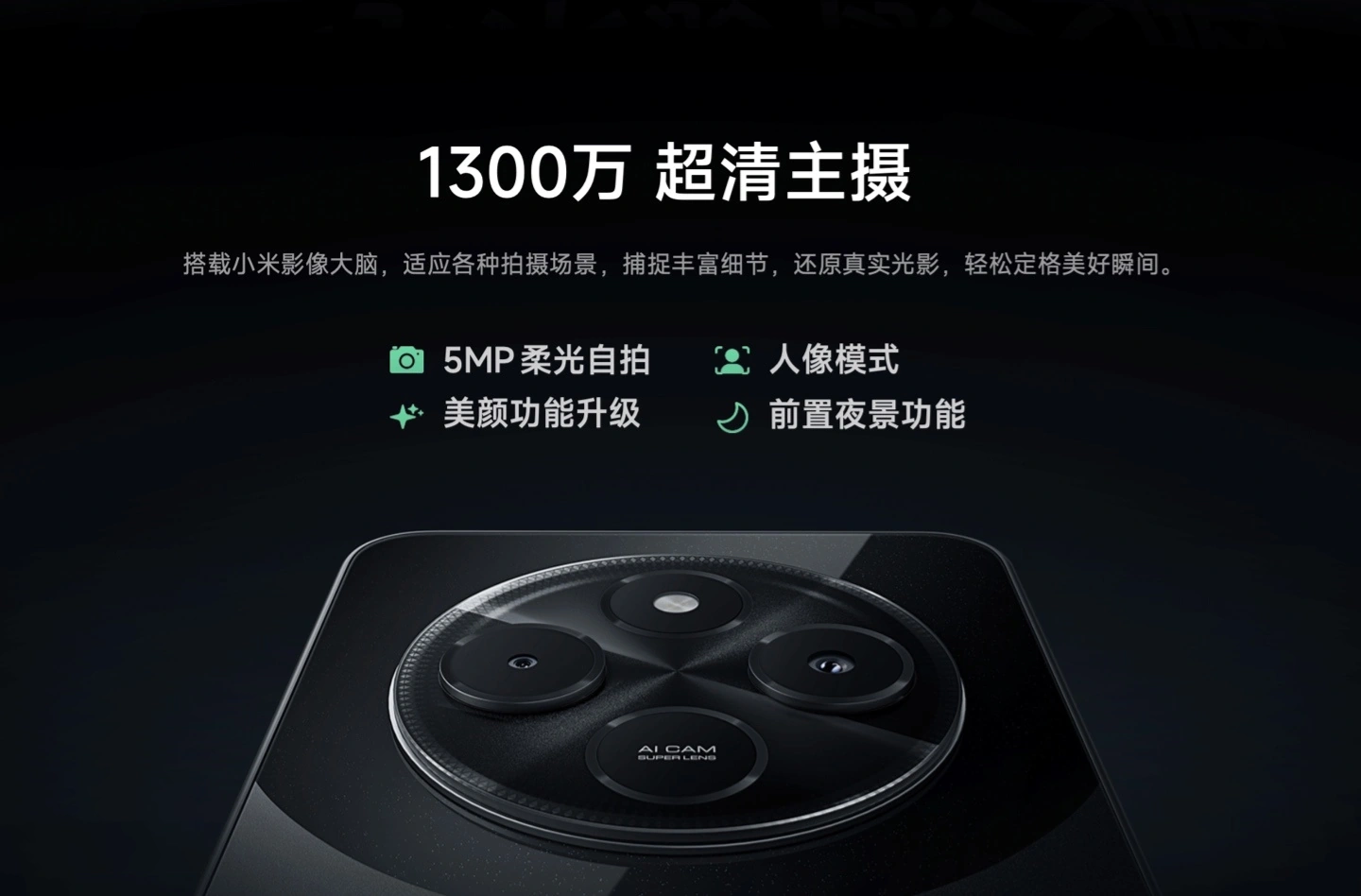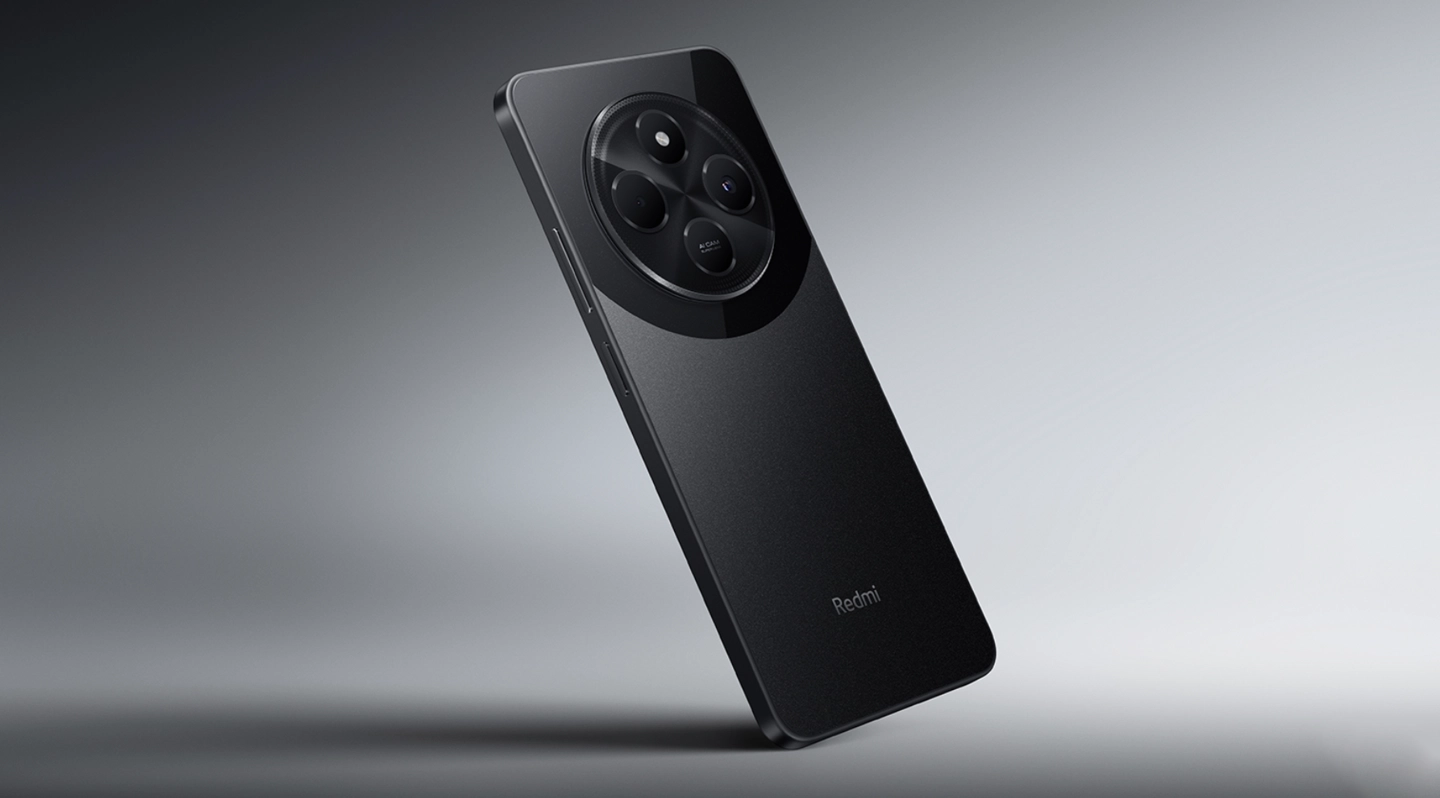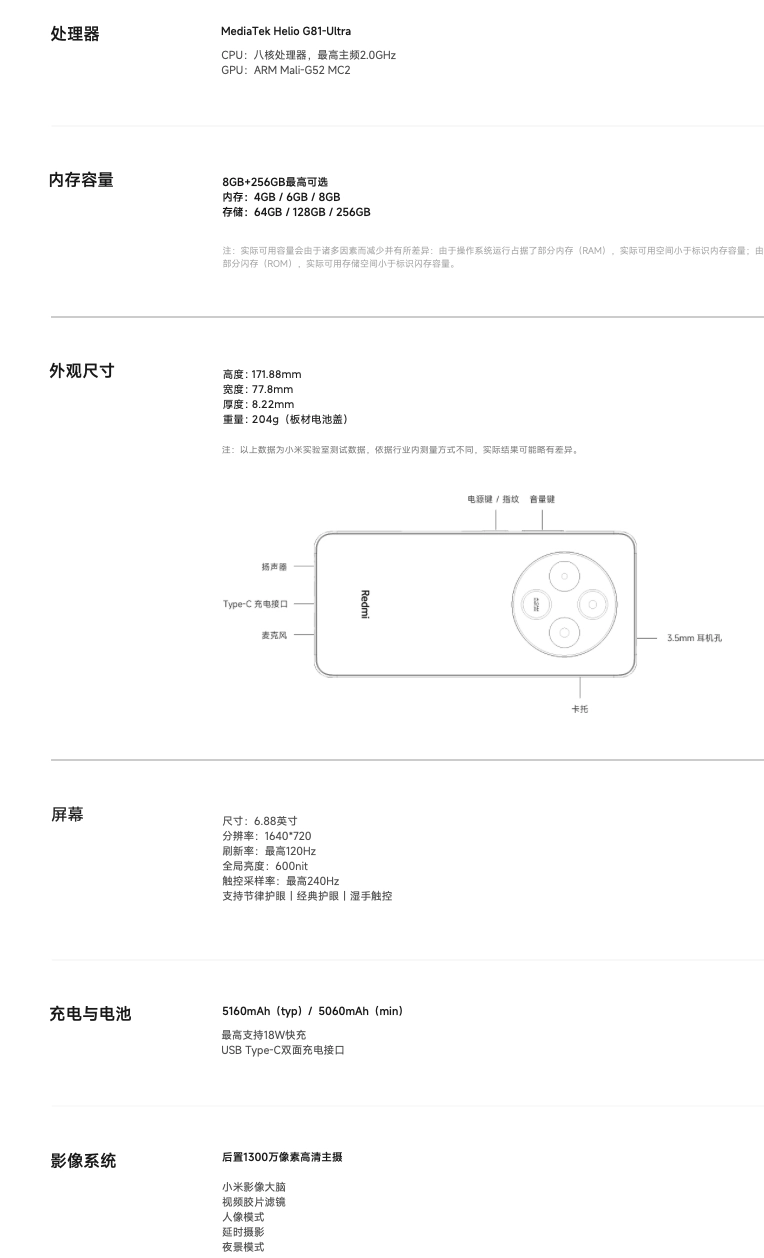Xiaomi has officially announced the Redmi 14C, an entry-level smartphone oriented towards basic functionality and performance. Equipped with the MediaTek Helio G81-Ultra processor, this phone sports a 120Hz LCD screen and starts at an attractive price of 499 yuan. It also bundles a free protective case and film with every purchase.
Pricing Options
- 4GB RAM + 64GB storage: 499 yuan
- 4GB RAM + 128GB Storage: 599 yuan
- 6GB RAM + 128GB Storage: 699 yuan
- 8GB RAM + 256GB Storage: 899 yuan
Key Features
- Display: 6.88-inch 120Hz LCD panel, with 1640×720 resolution, 600 nits brightness, 240Hz touch sampling rate. Front camera of 5MP for taking selfies and a single 13MP rear camera.
- Design: It is available in Glacier Silver, Blue Wave Green, and Star Rock Black colors, with a vertical middle frame that contains patterns on select models.
- Battery & Charging: Features a 5160mAh battery that supports 18W wired charging.
- Audio & Connectivity: With an additional ultra-linear speaker added 1216G blasts out a loudness that’s externally up to 150%, this is featured with WiFi-5, which in addition has a 3.5mm Audio interfacing.
Highlights
- A lightweight design that mimics a quad-camera layout despite featuring a single rear camera.
- Side-mounted fingerprint sensor for added security.
- Inexpensive pricing while retaining a modern 120Hz display with decent specifications.
The Redmi 14C brings in the perfect blend of value-for-money pricing and practical features, making it quite ideal for everyday users to grab a good smartphone within the budget.
HyperOS Downloader
Easily check if your phone is eligible for HyperOS 3.0 update!


 Emir Bardakçı
Emir Bardakçı










It is Elegant, Functional, Practical With Optimal Storage Capacity and Expandable With MicroSD, And At An Affordable Price.